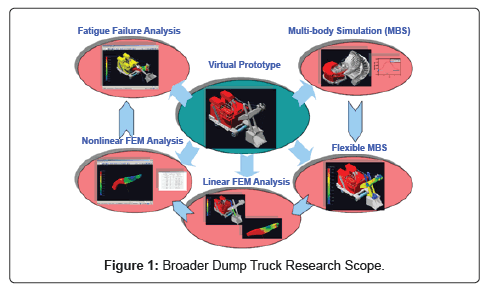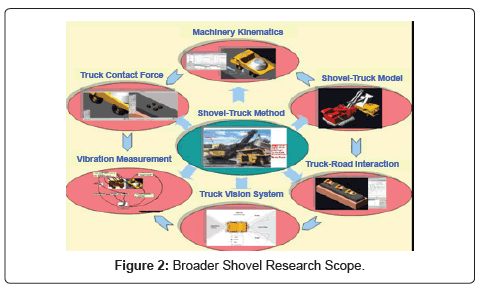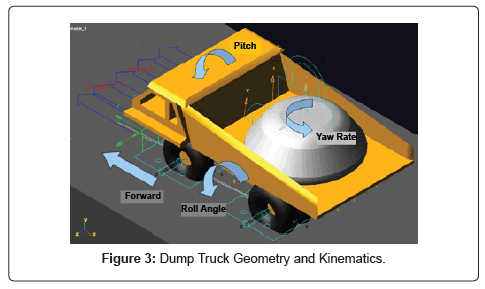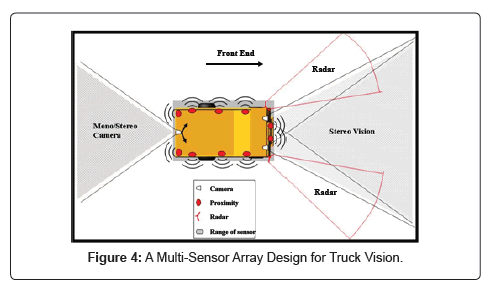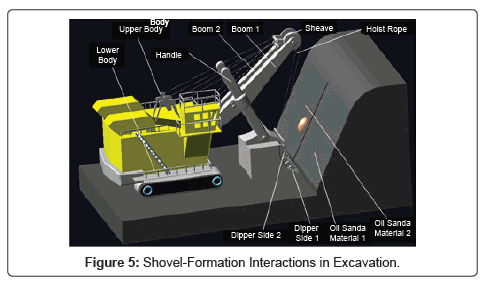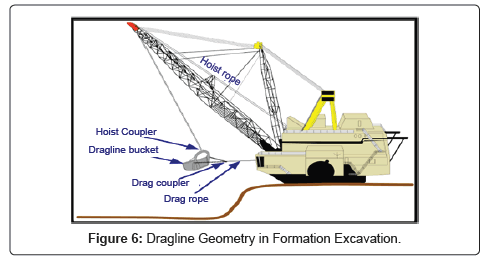Editorial Open Access
Advancing Knowledge and Frontiers for Safe and Productive Surface Mining Operations
Samuel Frimpong* and Robert H. Quenon
Department of Mining and Nuclear Engineering, Missouri University of Science and Technology, USA
- *Corresponding Author:
- Samuel Frimpong
Department of Mining and Nuclear Engineering
Missouri University of Science and Technology, USA
E-mail: frimpong@mst.edu
Received Date: January 15, 2012; Accepted Date: January 16, 2012; Published Date: January 17, 2012
Citation: Frimpong S, Quenon RH (2013) Advancing Knowledge and Frontiers for Safe and Productive Surface Mining Operations. J Powder Metall Min 2:e108. doi: 10.4172/2168-9806.1000e108
Copyright: © 2013 Frimpong S, et al. This is an open-access article distributed under the terms of the Creative Commons Attribution License, which permits unrestricted use, distribution, and reproduction in any medium, provided the original author and source are credited.
Visit for more related articles at Journal of Powder Metallurgy & Mining
US produces 78 major minerals and is ranked among the top five countries in the global production of aluminum (11%), coal (20%), copper (8%), gold (12%), iron ore (5%), and sliver (7%). The mining industry also produces significant aggregates for construction and manufacturing industries. These resources form the foundation of the US economy. From the National Mining Association (NMA), the direct value of the 2008 US minerals was $102.4B and major industries that use processed minerals added more than $2.3T to the US economy (16% of US GDP). The National Research Council (NRC) has concluded that one of the primary advantages the US has over its global competitors is its domestic mineral resource base. Majority of minerals and aggregates are extracted using the surface mining technology with heavy mining machinery. These large machines have introduced significant challenges into the mine operating environments. Higher capital investments, fuel and electricity costs, tougher operating environments and high production demands have created acute problems that must be addressed to meet these challenges via advanced research initiatives.
The surface mining industry, equipment manufacturing companies (OEMs) and government research organizations must collaborate with universities to create the basis of technologies for addressing these issues. Examples of such collaboration are the Heavy Mining Machinery Partnership at Missouri University of Science and Technology (Missouri S&T) with funding from CDC-NIOSH, Caterpillar Global Mining and Joy Global (Surface Mining) and CRC Mining in Australia with funding from Government and the mining industry of Australia. Creative solutions for moving research results into practice must also involve the mining companies, OEMs, identified technology companies in partnership with universities. These research initiatives must focus on broader areas that address safety, economics and production efficiency issues associated with heavy mining machinery. These areas must include, but not limited to, formation excavation science and engineering, machinery dynamics, fracture and fatigue failure of machine components, process control systems, machine vision and kinematics control, machine vibrations and operator safety, and machine-road interactions. Figures 1 and 2 show the respective broader dump truck and shovel machinery research scope in surface mining.
Three most important truck research areas include (i) truck vision and collision avoidance; (ii) truck vibrations under high-impact shovel loading operations (HISLO); and (iii) truck tire fatigue. Truck vision and collision avoidance research must provide answers to difficult challenges in the areas of operators’ visibility in the “blind” areas around trucks using appropriate sensors and truck stability problems (Figure 3). A multi-sensing geometry (Figure 4) must address appropriate sensor design, integration, registration and calibration. Researchers must develop collision detection and sensor control algorithms, false alarm mitigation using multi-sensor information fusion, and operatorinterface information overload. Truck vibrations research must provide answers to the problems of workplace safety and operator health. Research must focus on (i) mechanics of loading impact force; (ii) truck vibrations and shock wave propagation; (iii) virtual prototype HISLO simulator; and (iv) vibration control mechanics. Research must expand tire life through effective tire stress monitoring and management. Truck tire fatigue research must also address the issues of mechanical and thermal fatigue to provide an overall tire health and longevity plan that prevents physical wear and tear, overloading and overheating.
Advanced research initiatives on shovel excavation (Figure 5) must focus on (i) machine-formation interactions (MFI); (ii) multibody flexible-rigid shovel dynamics (MBFRSD); (iii) intelligent shovel excavation (ISE); and discrete element modeling (DEM) of formation excavation. MFI research must provide answers to optimum excavation geometry, fragmentation and diggability, dipper-teeth wear and tear, and dipper crack initiation and propagation. MBFRSD research must seek solutions to machine kinematics and dynamic problems, frontend assembly stress profiling for longevity and dipper-teeth fatigue. ISE research must also find answers to variable formation diggability, intelligent acquisition of geological and mineralogical information. DEM research must also focus on inter-granular binding forces, material fragmentation, diggability and flow ability, and excavation energy. Research on dragline excavation (similar to shovel) must focus on (i) bucket cutting resistance; (ii) bucket rigging dynamics; and (iii) front-end dynamics (Figure 6). Cutting resistance research must provide answers to the required contact force, formation resistances, operator efficiency, formation engagement and materials diggability and flow ability. Bucket rigging research must also address the ropes and rigging geometry, efficiency and profiles for controlling the dipper during the dragline cycle. The research on the front-end assembly dynamics must provide answers to kinematics and the effects of forces, inertia, friction, and cohesion due to kinematics and the applied joint torques.
The future of surface mining and the associated problems of safety, efficiency and economics will be advanced through sustained research efforts towards advancing frontiers and knowledge. These advances must provide a basis for developing advanced technologies for addressing the current and future challenges. This can only occur via a partnership among the surface mining industry, OEMs, government and universities toward the common cause for creative solutions.
--Relevant Topics
- Additive Manufacturing
- Coal Mining
- Colloid Chemistry
- Composite Materials Fabrication
- Compressive Strength
- Extractive Metallurgy
- Fracture Toughness
- Geological Materials
- Hydrometallurgy
- Industrial Engineering
- Materials Chemistry
- Materials Processing and Manufacturing
- Metal Casting Technology
- Metallic Materials
- Metallurgical Engineering
- Metallurgy
- Mineral Processing
- Nanomaterial
- Resource Extraction
- Rock Mechanics
- Surface Mining
Recommended Journals
Article Tools
Article Usage
- Total views: 14491
- [From(publication date):
July-2013 - Apr 09, 2025] - Breakdown by view type
- HTML page views : 9915
- PDF downloads : 4576

